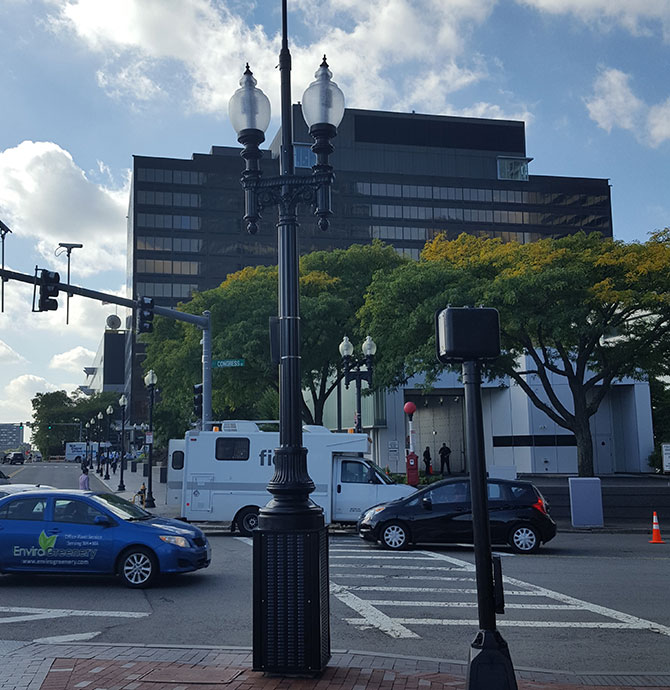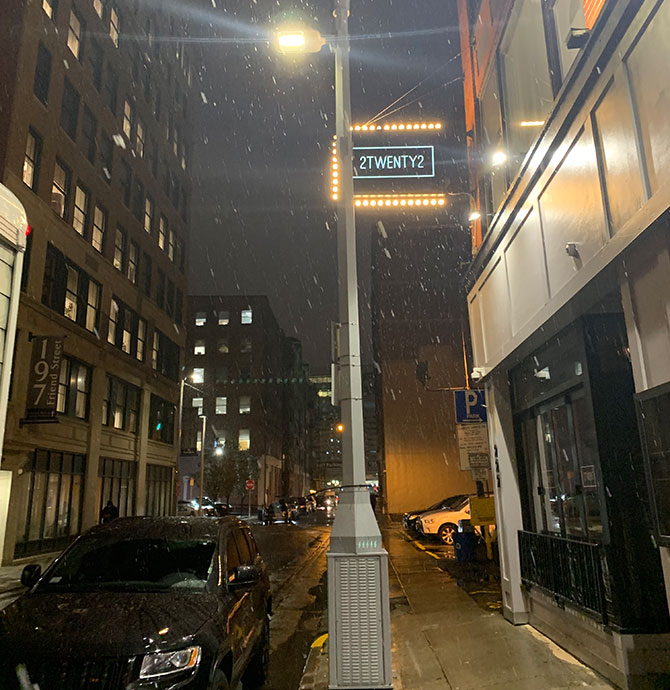What is 5G?
When we talk about “5G” we’re talking about the fifth generation of wireless networks—an updated version of the current 4G networks you use every day for your cellphones and other mobile devices. With each new generation of network
comes new and exciting possibilities, both in capacity and data speeds as well as the network’s integration into the latest communication technologies.
What’s Different?
One of the most important elements of 5G networks is its utilization of low-level, high-density small cell architecture which will employ new millimeter wave frequencies. These smaller wave frequencies have the potential to significantly improve bandwidth.
The denser localized coverage will allow networks to get closer to the end user to address the drawbacks of millimeter wave spectrum, such as shorter ranges and higher propagation loss due to the surrounding environment.
Today, we rely heavily on lower frequencies whose coverage comes from large centralized cell towers. Although powerful, these large towers can’t provide the density of coverage like small cells, which can be hidden in plain sight all around you.
Small cell antennas can be integrated in unobtrusive ways, such as on top of bus stops, and assimilated into street landscaping, such as light poles.

A decorative steel “smart pole” with integrated radio equipment in the base lights to match the city standard, and an omni antenna is mounted to the center mast.
How will 5G Support Smart Infrastructure?
5G networks will improve coverage and bandwidth to support evolving communications technology. For example, the implementation of 5G coverage will help with machine-to-machine communication technologies that will be utilized for connected cars and smart
intersections where real-time data monitoring is essential. The networks will also be instrumental in other data driven wireless communications, including personal data use and building automation utilizing the internet of things (IoT). The possibilities
for supporting smart homes, business, infrastructure, and communities are virtually endless, and applications on these new 5G networks will continue to develop and grow.
Where do A/E/C Firms Come in?
As designers, our work focusses on the physical infrastructure and equipment required for updating networks to provide 4G and 5G capabilities.
For example, a wireless carrier may identify a group of utility or light poles within a geographic area which need small cell equipment. We will go out and do site assessments and data collection of the existing equipment on those individual poles, including
physical dimensions, site photography, and surveying of the surrounding area. Our design scope requires us to consider the connection of each pole to the adjacent poles that connect to it, the design parameters of the wireless provider, and the requirements
of the local utilities that share that structure.
Once we have collected the data, we go back to the office and process it, turn it into a set of concept drawings to identify “what goes where,” and meet wireless provider and utility guidelines. Existing poles could have any number of equipment
pieces on them, including primary electric equipment, secondary electric equipment, fiber and communication cables, and lighting circuits. These concept drawings will then be utilized for initial discussion with municipalities, utility pole owners,
and other stakeholders.

A faux concrete “smart pole” with integrated radio equipment in the base, lights to match the city standard, and a canister antenna mounted to the top of pole.
Once the concept pole is approved by all parties, we will assemble a design document that shows exactly where the equipment and antennas need to be mounted to meet the coverage objective and clearance requirements. This document will also indicate the
equipment power source and fiber connection points required for system data backhaul. A typical project will include a radio cabinet and various electrical equipment, as well as a coaxial cable which will run up to an antenna.
Other design deliverables we may provide include FAA-1A and right of way surveys, pole structural analysis, traffic management plans, photo simulations, and foundation designs.
Ultimately, our work culminates in the implementation of a safe and effective node network which will help to support current and future wireless technologies and provide the tools necessary for building smarter and more technologically capable communities
and infrastructure.